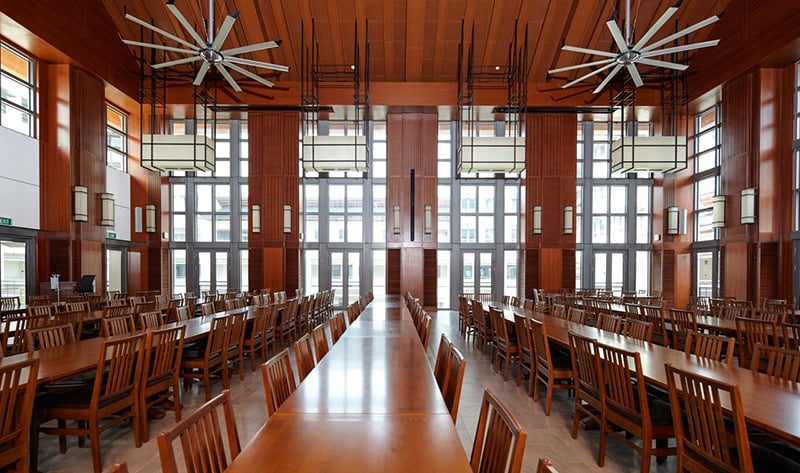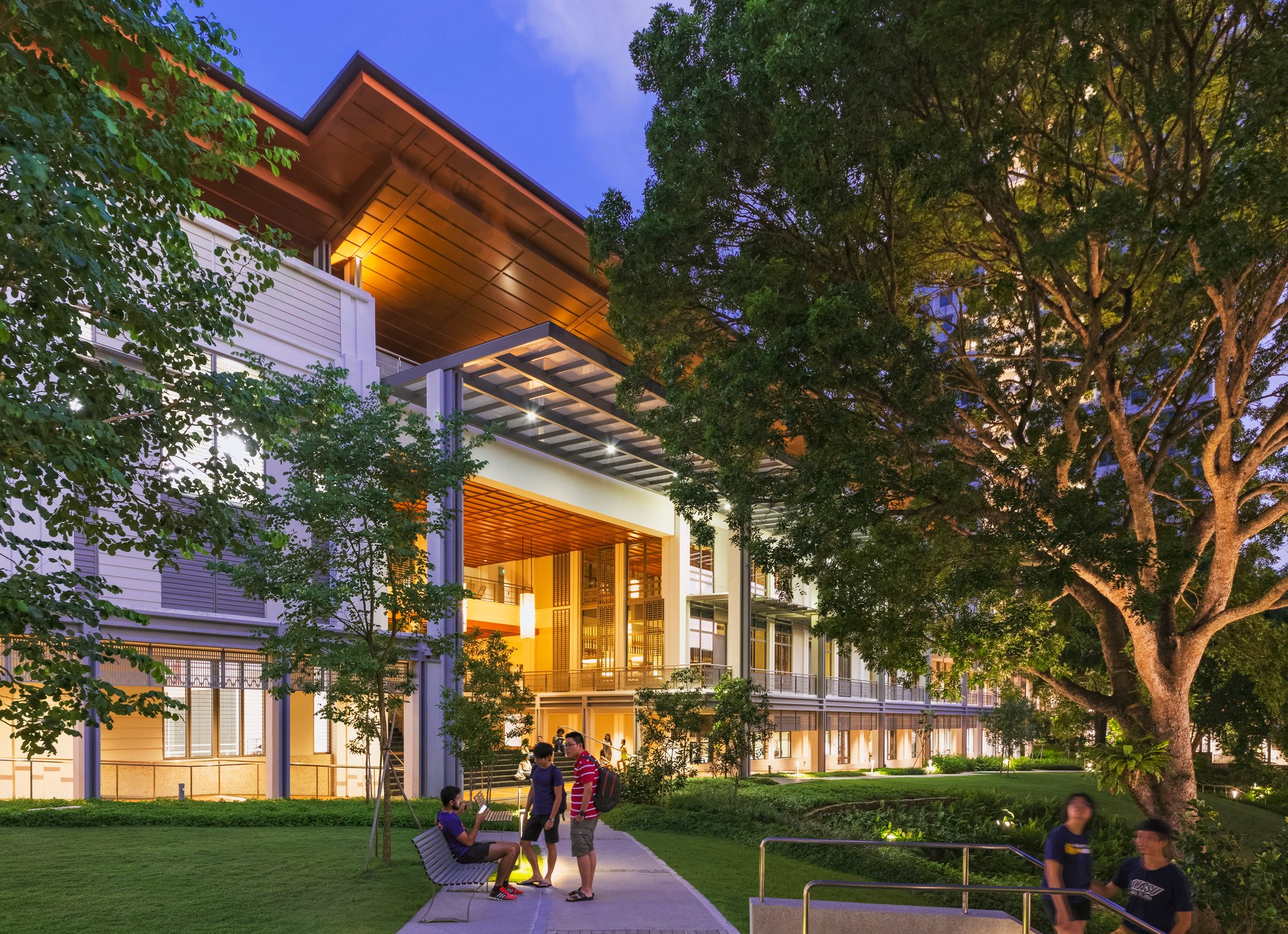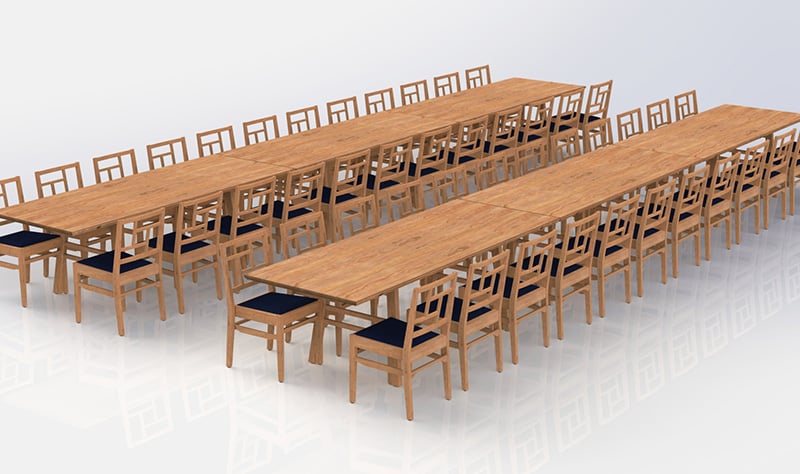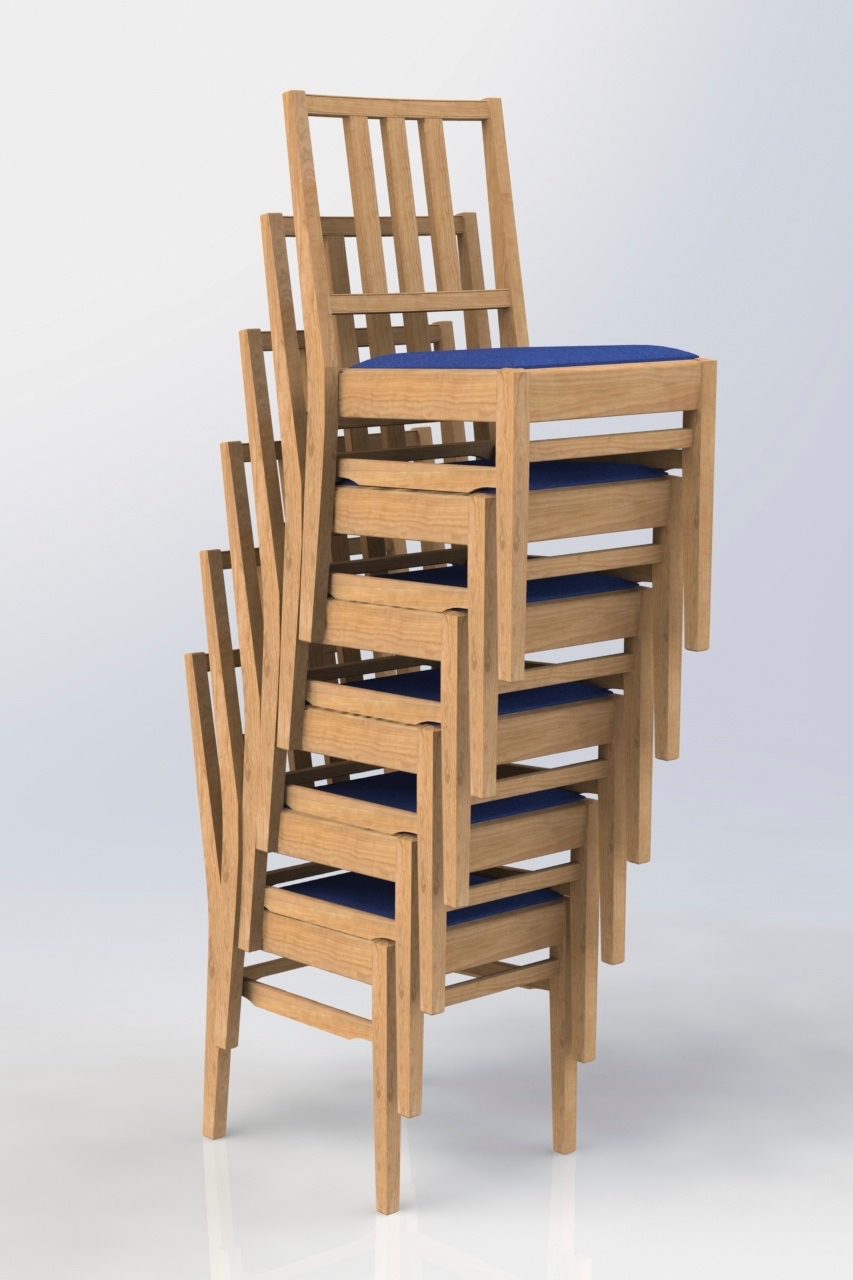The stacking version is specified throughout, while different stains – teak, cherry and beech – also signify a particular hall.
Individually, the chair is comparatively unassuming, designed to be inconspicuous rather than shout its presence, but when every little detail is multiplied by 500, it becomes highly memorable. Chairs in such quantities are seen not as individual pieces, but as a group. They “read” together and create a visual identify greater than the sum of their parts.
The design team worked closely with the architects to understand the general rhythm of the spaces and make the dining halls and the dining tables work more effectively. Flexibility in the ways the furniture could be used was the main thing; the spaces had to be cleared quickly and easily by stacking the chairs on custom-made storage and transport dollies, another Luke Hughes signature.
Space Planning for efficient operations
Pelli Clarke Pelli had a clear idea of what they wanted to do with the joinery and how it served the overall concept; the windows, the roofscape, the flooring and the associated buildings.
We brought our domain expertise in the design and setting out of dining commons to the project, undertaking the space planning of the three Commons and their dining tables and chairs to maximise both capacity and operational efficiency.
We realigned the architect’s preliminary layouts to align the position and scale of the dining table runs with the architectural structure and detailing of each Commons.
The design team at Luke Hughes tidied up a number of anomalies for the architectural teams, and also raised the hall capacity by suggesting multiple configurations. Everything now aligned with the columns and architectural features, so the feel of the space became calmer, and the precise leg positions were engineered down to the last millimetre, so no one had to sit against a leg.
This systematic application of our expertise in the design of dining commons made an enormous difference to a very busy space. The client was thrilled and so are the students.






